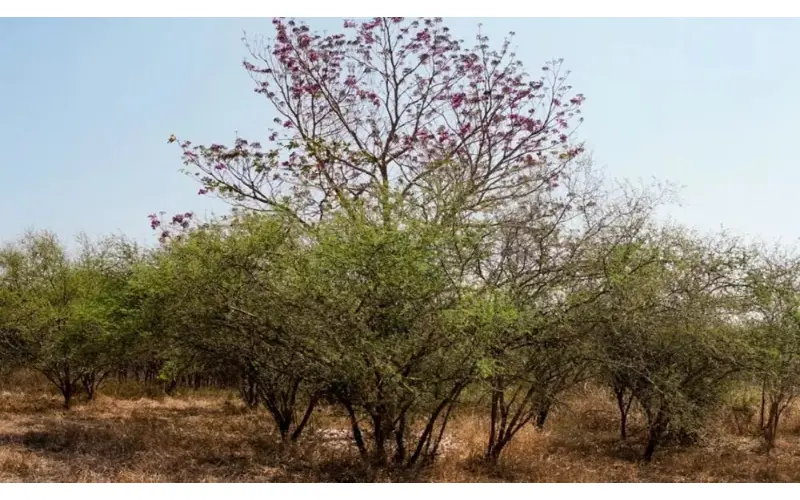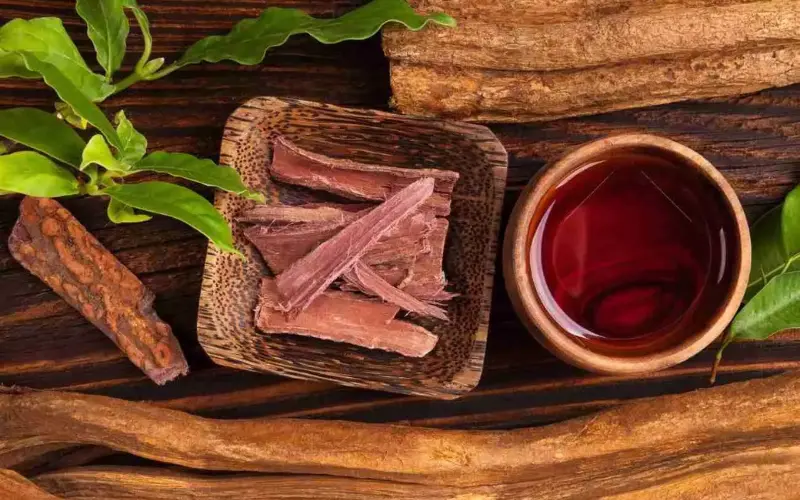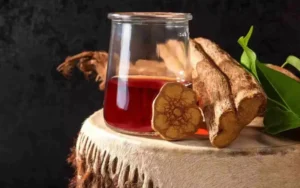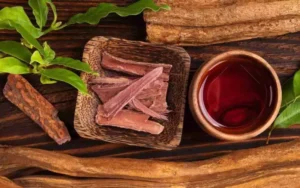The Mimosa hostilis also called Mimosa tenuiflora, is a small shrub native to South America whose height ranges from one to eight meters high. Its trunk is reddish, and its leaves are very characteristic, they grow in the form of ferns or very small leaves that grow in linear pairs (between 10 to 30 pairs approximately).
This small plant also produces beautiful spikes called inflorescences that can be white or pale yellow. It can thrive perfectly in a pot, in sunny or shady environments. Now, would you like to know how long does it take to grow Mimosa hostilis?
How long does it take to grow Mimosa hostilis?
Mimosa hostilis grows rapidly after germination of its seeds. From 2 to 4 weeks we can already perceive its growth, so it is very important not only to make sure to use seeds in good conditions, but also to use a suitable type of substrate, although it can grow in almost any soil.
This shrub reaches its maximum height (between 8-10 meters) at approximately 10 years of age, although in its first two years it manages to reach one meter in height. This shrub has two methods for the seeds to germinate and grow properly at home, since in its natural state in open areas, the seeds are usually scattered and disseminated by the action of the elements (wind-rain).
The first of these methods consists of helping the seeds to germinate by subjecting them to a process of thermal scarification, which consists of subjecting the seeds to heat by immersing them in hot water for a certain period of time, and the second, although it has some similarities with the first, is a little simpler. Let us look at each of these procedures in detail.

Cultivation of Mimosa hostilis
Method 1. (Thermal scarification)
Step 1
Place the necessary amount of water in a container (pot, pan) according to the amount of seeds to be germinated, heat to boiling point and turn off.
Step 2
File each seed until it is cut in half. Soak them in the boiled water for two hours until the seeds swell and open.
Step 3
Cover the seeds with kitchen paper or a damp cloth and place them in a plastic bag. Store them for seven days in a place where the sun’s rays do not reach them directly, always maintaining humidity.
During this time, the progress of germination should be checked daily.
Step 4
When the seeds have emerged, you should plant it in a pot with fertilized soil or directly in the ground, but no more than two seeds should be placed in the case of pots, and if you choose the second option, you should sow them leaving a prudent distance between each germinated seed.
Method 2
This method is very similar to the previous one, but with some variations in the process. Let’s see:
- Add water in a glass or cup and soak the seeds for 24 hours.
- Fill a seedling tray with prepared soil, and if you don’t have it you can also use an empty egg carton and fill each space in it, then water the soil.
- Place 1 to 2 seeds in each seedbed space and cover them with a little more compost.
- Take the seedbed to a place where the sun’s rays do not fall directly on the seedling. Water the plants constantly and after two weeks they will have grown sufficiently to achieve viability.

Optimal growing conditions
To achieve vigorous and healthy growth of Mimosa Hostilis, it is crucial to provide the right environmental conditions from the start:
- Climate and USDA zone: This tropical plant is best suited to zones 9 to 11, with warm, frost-free temperatures. In colder regions, it should be grown in a pot or greenhouse.
- Sunlight: Requires direct sunlight for at least 6–8 hours per day. It is tolerant of intense sun and thrives best in open spaces.
- Soil type: It prefers sandy, well-drained, slightly acidic soil (pH 5.5 to 6.5). Avoid clayey or compact soils that retain water.
- Watering: Although it is tolerant of moderate drought, during the early stages it needs regular watering, especially in dry climates. Once established, occasional watering is sufficient.
- Humidity: Tolerates dry environments well, but if grown indoors or in greenhouses, 40% to 60% humidity is ideal.
Providing these conditions promotes accelerated growth in the early years, which is when the plant develops its most robust root system.
Ongoing care
Once Mimosa Hostilis has germinated and is in active growth, it is important to maintain proper cultivation practices to sustain its development:
- Fertilisation: Apply balanced organic fertiliser every 3 to 4 months during the first two years. One with NPK 5-5-5 is recommended to strengthen roots, leaves and flowering.
- Pruning: Not essential, but can be done to control size or stimulate secondary branches. Avoid drastic pruning before the second year.
- Transplanting: If planted in a pot, gradually transplant to larger containers every 6 months until it can be established in the ground.
- Pest protection: Although it is a hardy plant, it can be attacked by aphids, mealybugs or fungi in humid environments. Use natural treatments such as neem or potassium soap if necessary.
- Drainage: Always ensure that the container or soil has efficient drainage, as waterlogging can cause root rot.
These practices ensure that the plant reaches its maximum height and vitality over the years.
Harvesting root bark
One of the main reasons for cultivating Mimosa Hostilis is to harvest its root bark (MHRB), which contains bioactive compounds that are valuable for cosmetics, dyes, and other traditional uses. However, it should not be harvested prematurely.
Experts on forums agree that the tree must grow for at least 2–3 years and produce seeds before considering a mature bark harvest (>500 g per 4 two-year-old trees). Ideally, it should be more than 1.5 metres tall and have a good stem or root thickness before considering harvesting.
If you want to extract the root without killing the plant, you can cut only a side part of the secondary root, leaving the main system intact. Alternatively, grow several plants and harvest only the most mature ones.
Proper and responsible harvesting not only preserves the plant, but also improves the quality of the harvested bark.
Uses of Mimosa Hostilis
Due to its excellent properties, this plant provides favorable benefits to those who prefer naturopathic medicine. Some of
Injuries and burns:
This is one of the most common uses of Mimosa hostilis. To prepare it, boil and reduce a portion of the bark of the plant proportional to the size of the wound to be healed. Let it cool and then add the liquid on the burn.
Cosmetics manufacturing
The bark of this shrub is used to make cosmetic products for various uses such as soaps, shampoos and moisturizers. Its benefits for skin rejuvenation have gradually become popular, being one of the beauty secrets of actress Salma Hayek, who even has a line of cosmetics that include Mimosa hostilis as one of its main ingredients.
Much has also been said about its effectiveness in strengthening the scalp and helping to prevent hair loss, so it is now an essential ingredient in many hair products.

Ornaments
It also serves as a decorative plant during its first years of growth, since it does not usually reach a large size during its first 4 years. It can be used to be hung in nurseries or placed in vases even in the interior of apartments.
It does not need a large space, only to be in an appropriate climate protected from the cold and direct sunlight.
Dye
The reddish color of its bark is used to extract natural dyes that are used especially in the leather industry to dye the skins.

Wood
The hardness of its trunk, despite not being a very thick bush, has been used as a material for the construction of furniture, fences, suspension bridges and stairs.
Beverages
In some Latin American countries such as Brazil, Nicaragua and Mexico, where this shrub is also known as “jurema”, an artisanal wine is usually prepared with the root of the plant, which is used in many religious rituals performed by the indigenous groups of these countries.
Other uses:
Other ways to take advantage of this plant are: for the reforestation of areas devastated by fires or erosion, thanks to the numerous propagation of seeds in open areas and its rapid growth, as well as acting as a fertilizer for its bacterial properties that help fix oxygen in the soil.
As food for some animal herds, since its leaves and fruit contain a high nutritional content that makes it very palatable to animals such as cows and goats.
Frequently asked questions
How long does it take to grow Mimosa Hostilis from seed?
It usually takes 7 to 14 days for seeds to germinate, and the plant can reach 1–2 meters within the first 2–3 years in optimal conditions.
Can I grow Mimosa Hostilis indoors?
Yes, but it requires full-spectrum light and plenty of space. Outdoors is preferable unless you live in a cold climate.
When can I harvest the Mimosa Hostilis root bark?
You should wait at least 2 to 3 years, ideally when the tree has matured and produced seeds.
How tall does Mimosa Hostilis grow?
In full sun and ideal conditions, it can grow up to 20–25 feet (6–8 meters) over 8–10 years.
What climate is best for growing Mimosa Hostilis?
It grows best in USDA zones 9 to 11, with warm temperatures, moderate humidity, and well-drained soil.











